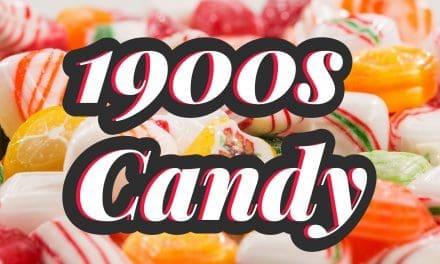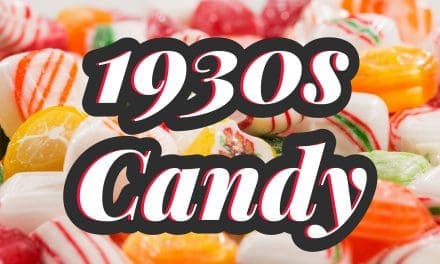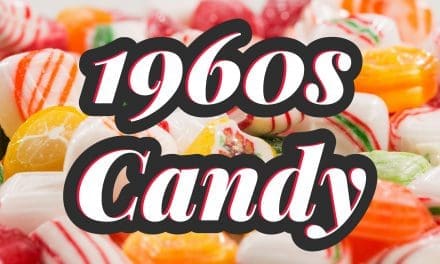Last updated 1 year ago | Originally Published: October 6, 2024
The 1970s was a decade marked by significant social, cultural, and technological changes in the U.S., influencing many aspects of daily life, including the candy industry. Environmental movements, technological breakthroughs like the rise of personal computers, and cultural shifts in music and film all contributed to a transformative era. The decade saw a rise in individual expression and consumerism, reflected in everything from fashion to food. In this innovation climate, candy makers also introduced new, exciting treats that captured the imagination of children and adults alike. The bold and playful spirit of the 1970s is mirrored in many iconic candies still enjoyed today. Below is an accurate list of all the best ‘70s candy, most of which can be purchased here at Candy Retailer!
Challenge: If you can think of only one brand of 1970s candy we didn’t list, let us know in the comments. If it’s confirmed to be correct, we’ll give you all the credit, add the brand to our list, and send you a 10% discount code that you can use for anything in our store!
Candy by Decades:
- 1800s Candy
- 1900s Candy
- 1920s Candy
- 1930s Candy
- 1940s Candy
- 1950s Candy
- 1960s Candy
- 1970s Candy
- 1980s Candy
- 1990s Candy
- 2000s Candy
Bee International Candy (1970)
Founded in 1970, Bee International is known for its innovative approach to novelty candy, blending creativity with fun, playful designs. Based in San Diego, the brand makes unique candies for special occasions, including popular items like candy-filled Easter eggs and seasonal products for Halloween and Christmas. Click below to explore or purchase Bee International candy here at Candy Retailer today!


Coffee Rio (1970)
Coffee Rio was introduced in the early 1970s and quickly became popular for its unique coffee-flavored candies. Made with real coffee and dairy cream, Coffee Rio is known for delivering a bold, authentic coffee taste in a convenient candy form. Available in flavors like Original Roast, Kona Blend, and Espresso, it offers a rich experience for coffee lovers. Over the years, it has maintained its reputation as a premium candy enjoyed by those seeking a caffeine-inspired treat. Click below to order your favorite Coffee Rio flavors here at Candy Retailer today!


Laffy Taffy (1970)
Laffy Taffy, created by the Beich Company in 1970 and later acquired by Nestlé under the Willy Wonka brand, is known for its stretchy, chewy texture and fruit flavors. Each wrapper includes jokes, making the candy as fun as it is about flavor. With its bright colors and variety of options, Laffy Taffy became a staple in the candy world and remains a favorite treat today. To enjoy this classic, click below to purchase your favorite flavors here at Candy Retailer!


Frooties (1970)
Introduced by Tootsie Roll Industries in the 1970s, Frooties are bite-sized, chewy candies with many fruity flavors. Famous for their affordable price and distinctive taste, Frooties quickly became a favorite, especially in schools and party bags. Each individually wrapped piece delivers a burst of fruit flavor, making it a lasting hit with candy lovers. Click below to get your hands on Frooties here at Candy Retailer!


Sour Patch Kids (1970s)
Sour Patch Kids, launched in the late 1970s, started as “Mars Men” in Canada before gaining popularity worldwide. Known for their sour-then-sweet taste, these gummy candies quickly became a favorite for those who enjoy a bit of a tart kick. The iconic shape of the candy—resembling little kids—adds to its appeal. Today, Sour Patch Kids are available in various flavors and are still a top-selling candy in America and beyond. Click below to order Sour Patch Kids here at Candy Retailer!


Wonka Candy (1971)
Introduced in 1971, Wonka Candy was created as a promotional tie-in for the film Willy Wonka & the Chocolate Factory. Produced by Quaker Oats, the brand featured innovative confections inspired by Roald Dahl’s book, including the Wonka Bar and Everlasting Gobstopper. These candies aimed to reflect the imaginative themes of the movie. Ownership later transitioned to Nestlé and Ferrara Candy Company, maintaining the Wonka brand’s presence in the confectionery market. To learn more, click below to see our brands, or you can learn more about them in this article we published titled Discover The Best Ferrara Candy Brands In the USA.


Breath Savers (1973)
Breath Savers was launched in 1973 by the Life Savers brand as a sugar-free mint alternative. Designed to freshen breath, it became famous for its long-lasting flavor and compact packaging. The product was positioned as an oral hygiene aid, distinguishing itself from traditional sugary mints. Over the years, Breath Savers expanded its flavor range and maintained a significant presence in the confectionery market, catering to consumers seeking a convenient breath-freshening option.


Skittles (1974)
Skittles were first produced by Mars, Incorporated in 1974 in the United Kingdom. These small, fruit-flavored candies are known for their chewy texture and vibrant colors. Skittles come in many flavors, including grape, lemon, orange, strawberry, and lime, encapsulated in bright, colorful wrappers. The brand’s slogan, “Taste the Rainbow,” emphasizes the diversity of flavors and colors. Skittles expanded to the U.S. market in the late 1970s and has since become a globally recognized candy brand.


Hi-Chew (1975)
Hi-Chew was developed in Japan in 1975 by Morinaga & Company. Known for its long-lasting, chewy texture, Hi-Chew is available in several fruit flavors, including grape, strawberry, and green apple. The candy gained international popularity in the 1980s and 1990s, expanding beyond Japan to markets in the United States and Europe. Hi-Chew remains a prominent brand in the confectionery industry for its quality and taste.


Trolli Candy (1975)
Trolli was established in 1975 in Germany as a subsidiary of Ernst Heidler GmbH. The brand specializes in gummy candies, including the popular Sour Brite Crawlers. Known for its wide variety of shapes and bold flavors, Trolli is an iconic ‘70s candy brand that is still famous today in the 2020s! The company emphasizes innovation in its product lines, offering traditional and unique candy options. Trolli expanded internationally, becoming a leading name in the global gummy candy market, and continues to produce a diverse range of confectionery products.


Bubble Yum (1975)
Launched by Life Savers in 1975, Bubble Yum was the first soft bubble gum on the market, revolutionizing the gum industry. Its chewability, soft texture, and bold flavors quickly became popular. A rumor in 1977 falsely claimed that the gum contained spider eggs, which Life Savers publicly debunked. Despite the controversy, Bubble Yum continued to thrive, and it was later acquired by Hershey in 2000. Today, it remains one of the leading gum brands.


Pop Rocks (1975)
Introduced in 1975 by General Foods, Pop Rocks became an instant sensation for its unique popping and crackling sensation when dissolved. Created by chemist William Mitchell, Pop Rocks contain pressurized carbon dioxide released when the candy melts in your mouth, producing the iconic popping effect. Though briefly discontinued in the 1980s due to rumors, Pop Rocks returned to shelves and remained popular worldwide.


Warheads (1975)
Warheads, introduced in 1975 in Taiwan and later gained popularity in the U.S. during the 1990s, are known for their extreme sourness. These hard candies are coated with a layer of sour powder that provides an intense tart experience before giving way to a sweet center. Warheads is now an iconic brand in the sour candy category and continues to be a hit among those who enjoy bold flavors.


Bubblicious (1977)
Bubblicious, launched in 1977 by Warner-Lambert, was one of the first competitors to Bubble Yum. Offering soft, easy-to-chew bubble gum, it was known for its large bubbles and introduced a wide range of fun flavors, such as Lightning Lemonade and Watermelon Wave. It remains a popular bubble gum choice and is now produced under Mondelez International.


The Foreign Candy Company (1978)
Founded in 1978, The Foreign Candy Company began by importing foreign confections to the U.S. One of its most famous products is the “Rips” licorice line. However, it gained widespread recognition by introducing “Toxic Waste” sour candies. The company is known for bringing unique and extreme candies to the U.S. market, focusing on bold flavors and novelty products.


Whatchamacallit (1978)
The Hershey Company introduced Whatchamacallit in 1978. The candy bar initially featured peanut-flavored crisp coated in chocolate. In 1987, the formula was updated to include a layer of caramel, adding a chewy texture to the original crispiness. Whatchamacallit’s quirky name, designed to be memorable, helped it stand out in the competitive candy market. It remains in production today, although it has a lower profile than other Hershey products.


Ring Pop (1979)
Ring Pop was introduced in 1979 by Topps, offering a fun, wearable candy in the shape of a ring. Originally marketed as a solution to stop kids from sucking their thumbs, Ring Pop quickly became popular due to its novelty and long-lasting fruity flavor. Its bright colors and candy “gem” remain popular with children and are often used at parties and events.


Hubba Bubba (1979)
Hubba Bubba, introduced by Wrigley in 1979, was the first bubble gum designed to be non-sticky, making it easier to remove from skin or hair. Known for its ability to blow large bubbles without the mess, Hubba Bubba quickly gained popularity. The brand continues to offer a variety of flavors, including the original, and remains a staple in the bubble gum market.


About Candy Retailer
Candy Retailer is a family-owned online store based in Newport, Kentucky, specializing in candies that defined different eras, particularly the 1970s. We focus on delivering iconic treats from this transformative decade, such as Laffy Taffy, Pop Rocks, and Whatchamacallit. Our state-of-the-art temperature-controlled facility ensures that every order reaches you fresh and ready to enjoy. Whether revisiting nostalgic favorites or trying these classics for the first time, Candy Retailer brings you the best 1970s candy, capturing the sweet essence of a memorable decade! Explore our 70s candy selection today! You can also follow us on Facebook for the latest articles, deals, and daily snack and candy drops!






Recent Comments